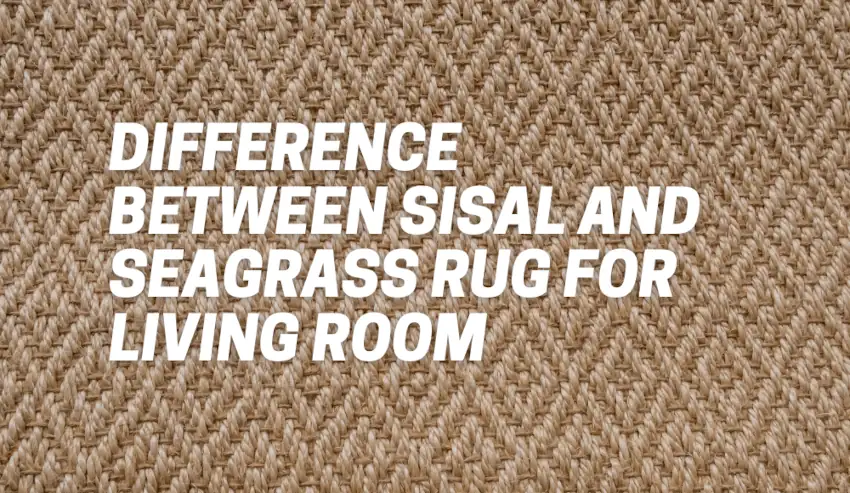Last updated on May 26th, 2024 at 06:27 am
When it comes to interior design, the idea of using two rugs in one room can often feel both unconventional and intriguing. Whether it’s about adding depth, warmth, or defining separate areas within a larger space, layering rugs has become a trend that offers an exciting challenge. Coordinating multiple rugs in a single space can transform the ambiance, bringing forth a unique, textured, and personalized touch. In this comprehensive guide, we’ll explore the intricate details of mixing, matching, and coordinating different rugs to create an aesthetically pleasing and cohesive room.
How Do I Mix and Match Rugs in One Room?
Layering rugs involves a creative blend of different textures, patterns, and sizes. To harmonize multiple rugs in one room, consider these points:
1. Consistent Style:
- Ensure the rugs share a consistent style or theme. This could be a unifying color palette, pattern, or texture. For example, if you’re mixing a geometric patterned rug with a more traditional oriental rug, try to find elements that tie them together, such as similar colors or complementary designs.
2. Vary Sizes and Shapes:
- Experiment with different sizes and shapes. You might place a large rug as the primary base under your furniture and then layer a smaller or differently shaped rug on top for added interest.
3. Contrast or Complement:
- Decide whether you want the rugs to complement each other or create a contrast. For complementing, choose rugs that share a common color scheme or design elements. For contrast, pair a bold, patterned rug with a more subtle or solid-colored rug.
4. Define Spaces:
- Use rugs to define different areas within a larger space. For example, you could use a rug under the dining table and another one in the living seating area. Ensure there’s a visual connection or flow between the rugs.
5. Mindful Placement:
- Be deliberate with the placement. Overlapping rugs or layering them can create a visually appealing effect. A smaller rug can be placed on top of a larger one to add texture and dimension.
6. Balance and Symmetry:
- Maintain balance in the room. If one rug is particularly eye-catching, consider balancing it out with a more subdued rug in another area of the room.
7. Pay Attention to Texture:
- Different textures can add depth to your room. Pair a shaggy or high-pile rug with a flat-weave or low-pile rug to create an interesting contrast in texture.
8. Test Before Committing:
- Experiment and lay the rugs out before finalizing. Sometimes what looks good in your mind might not translate well in the actual space. Adjust and try different combinations until you find the right balance.
9. Cohesive Decor:
- Ensure that the rest of your room’s decor supports the rugs. Your furniture, wall colors, and other decorative elements should harmonize with the mixed rugs to create a cohesive look.
10. Trust Your Instincts:
- Ultimately, trust your instincts and personal taste. There are no hard and fast rules. If it looks good to you and fits your style, it’s likely to work well.
How to mix and match rugs
—
Tips for Coordinating Different Rugs in the Same Space
Here are some expert tips to effectively coordinate different rugs in one space:
- Unified Color Palette: Stick to a cohesive color palette for a harmonious look.
- Varied Textures: Mix rug textures to add depth and interest to the space.
- Maintain Balance: Ensure a balance in patterns and colors to prevent overwhelming the space.
Should Two Rugs in the Same Room Match?
While matching rugs can create a sense of symmetry, it’s not necessary. Coordinating rugs with a unifying element like color or style often yields a more visually appealing outcome.
Complementing Each Other: While the rugs don’t have to match, it can be beneficial if they complement each other in some way. This could be through a shared color scheme, a common design element, or a similar style.
Coordinating Elements: If the rugs differ significantly, try to tie them together using coordinating elements in the room. This could be achieved through matching furniture upholstery, similar color accents, or a shared design theme.
Creating Distinct Zones: Using different rugs can help delineate specific areas within a larger room. For instance, you might use one rug in a seating area and another in a dining area, each with its distinct style.
Adding Texture and Depth: Different textures and styles of rugs can add depth and dimension to a room. Pairing a high-pile, cozy rug with a flat-woven rug can create an interesting contrast.
Personal Style and Aesthetic: Ultimately, the decision on whether or not the rugs should match depends on your personal style and the overall aesthetic you’re trying to achieve. Some prefer a more eclectic, diverse look, while others might prefer a more cohesive and coordinated design.
While matching rugs can create a more unified and traditional look, mixing rugs with varying patterns, textures, and styles can give the room a more eclectic and visually dynamic appearance. It’s a matter of personal preference and the style you wish to achieve in your space.

Best Practices for Layering Rugs
Mastering the art of layering rugs involves these best practices:
- Use Rug Pads: To prevent slipping and maintain the rugs’ position.
- Anchor Points: Ensure the rugs are positioned to anchor specific furniture or spaces within the room.
- Experiment: Don’t be afraid to experiment with different combinations until you find what works best for your space.
Choosing the Right Sizes for Two Rugs in One Room
Selecting the right sizes for multiple rugs involves:
- Proportions: Consider the proportion of the room and the furniture placed on the rugs.
- Visual Division: Choose sizes that define different zones within the room without overcrowding or appearing disjointed.
Here are some more guidelines for selecting the appropriate sizes for two rugs in a single room:
1. Define Zones:
- Primary Rug: For the primary rug, like in a living room, select a size that accommodates all or most of the seating furniture. Ensure that the front legs of sofas and chairs sit on the rug for a cohesive look.
- Secondary Rug: The secondary rug can be smaller and used to define a specific area within the room, such as under a coffee table, accent chairs, or to highlight a specific space like a reading nook or an entryway.
2. Consider Room Proportions:
- In larger rooms, you might opt for a larger primary rug to anchor the main seating area, while a smaller secondary rug can be placed in a separate area to create a cozy, designated space.
- Smaller rooms might not have space for two large rugs, so consider a larger rug as the primary anchor and a smaller one to complement without overwhelming the space.
3. Rug Placement:
- The primary rug should be large enough to accommodate the key furniture pieces. For example, in a living room, it should cover the area where the coffee table, sofa, and chairs sit.
- The secondary rug, when placed within the primary rug area, can create an appealing layered effect. Ensure there’s some space between the edges of the primary and secondary rugs to avoid visual clutter.
4. Consistent Scale:
- Ensure the sizes of the rugs are in proportion to the furniture and the room. A too-small rug might make the room feel disjointed, while an overly large rug can overwhelm the space.
5. Visual Harmony:
- Maintain visual balance. If you have a large primary rug, the secondary rug should not compete in size. It should serve its purpose without overshadowing the primary rug.
6. Consider Rug Shapes:
- Experiment with different shapes. A rectangular rug could serve as the primary base, while a smaller round or square rug might be used as an accent or to highlight a particular area.
Always take accurate measurements of the room and the furniture before purchasing rugs. It’s also a good idea to use painter’s tape to map out the rug placements on the floor before buying to get a visual understanding of how the sizes will work in your space.
Coordinating Rugs in the Same Space: User Advice
User recommendations on the Internet often emphasize:
| Key Points |
|---|
| Considers whether rugs in adjacent rooms should match or coordinate. Avoids being too “matchy-matchy” but also wary of two completely different rugs looking weird. |
| Suggests matching rugs exactly, coordinating in style or color scheme. Shares experience of choosing a modern rug for dining space that contains similar colors to the living room rug. Advises on the size of the dining room rug. |
| Suggests a variety of rug combinations, emphasizing the importance of not creating a clash in aesthetics. Asks if the user has saved any preferred styles. |
| Recommends a large colorful rug in the living room and possibly not placing a rug in the dining room. If using two rugs, suggests not matching them exactly but having similar colors. Recommends mixing up shapes for variety. |
| Suggests using rugs of different tones for varied lighting considerations. Recommends lighter-colored rugs for a room with a lot of lighting to hide dust and particles. |
| Shares general tips and guidelines on selecting rugs for living rooms, discussing dimensions, size in relation to furniture, and the possibility of matching multiple rugs. |
| States that their two rugs in the “L”-shaped living/dining room do not match but do not clash. There’s some bare floor space between them. |
| Explains their approach of having three rugs in the family room with shared colors and similar style elements, yet each rug having its distinct design and color scheme. |
| Shares experience of having two rugs in the “L”-shaped living and dining area that do not match but have coordinating colors. Talks about experimenting to find the right rug combinations. |
| Describes having coordinated but not matching rugs in the living room and dining room. Emphasizes the importance of coordinating colors rather than a “matchy-matchy” approach. |
- Personal Taste: Let your personal style guide your choices while considering balance and harmony.
- Trial and Error: Experiment with various combinations to find the most appealing setup.
Popular Rug Combinations for Different Room Styles
Different room styles call for distinct rug combinations:
| Room Style | Popular Rug Combinations |
|---|---|
| Modern/Minimal | Juxtaposing a textured rug with a solid-colored one. |
| Bohemian | Layering vibrant, patterned rugs for an eclectic feel. |
| Traditional | Pairing a larger, neutral rug with a smaller, detailed rug. |
Patterns and Colors that Work Well Together
Some patterns and colors that blend seamlessly:
Patterns:
- Florals and Stripes: These can create a classic, complementary look. Combining a floral-patterned rug or curtains with striped throw pillows or upholstery can add depth.
- Geometric and Organic Patterns: Mixing geometric patterns with natural or organic patterns creates an intriguing contrast. For instance, a rug with geometric shapes paired with curtains featuring leafy or floral designs.
- Mixing Scales: Pairing large-scale patterns with small-scale ones often creates visual interest. Consider a large, bold pattern on an accent wall with smaller patterns in furniture upholstery or accessories.
- Tonal Patterns: Using patterns in the same color family but with different tones can add depth without being overwhelming. For example, combining different shades of blue in various patterns.
Colors:
- Analogous Colors: Colors that are adjacent to each other on the color wheel, such as blue and green or yellow and orange, work well together and create a harmonious, calming effect.
- Complementary Colors: Colors opposite each other on the color wheel, like blue and orange or red and green, create a vibrant contrast when used together.
- Monochromatic Schemes: Various shades and tints of a single color can create a sophisticated, elegant look. For instance, different shades of grey or blue in a room.
- Neutral with Pops of Color: Neutral tones like beige, gray, or white provide a versatile base. Introduce pops of color through accessories or accent furniture to add visual interest without overwhelming the space.
Guidelines:
- Maintain a Balance: Ensure there’s a balance between different patterns and colors. If one element is bold, consider balancing it with more subdued elements.
- Use a Dominant Pattern: Select one dominant pattern and use it in larger elements like rugs, curtains, or a statement wall. Then use smaller patterns in accent pieces.
- Consider Texture: Different textures can add depth and interest even when using the same color. For example, mix a chunky knit throw with a smooth velvet cushion.
- Test Before Committing: Lay out swatches or test items in the room to see how the patterns and colors work together before making a final decision.
Should Both Rugs Be the Same Style or Color?
While it’s not necessary for both rugs to match, a unifying factor – be it color, pattern, or style – can create visual coherence.
Creative Arrangements to Complement Two Rugs
Consider these creative ways to arrange multiple rugs:
- Overlap Method: Slightly overlap the rugs to create a seamless transition.
- Parallel Lines: Align rugs in parallel lines for a structured look.
Design Pitfalls to Avoid
Avoid these common design pitfalls when using two rugs in one space:
- Cluttered Appearance: Overcrowding the space with too many rugs.
- Mismatched Scales: Ensure the sizes and scales of the rugs are proportionate to the room.
Comparison Table
| Rug Characteristics | Comparison Data |
|---|---|
| Size | 5’x7′, 8’x10′, 9’x12′ |
| Material | Wool, Cotton, Jute |
| Maintenance | High pile, Low pile |
Conclusion
Coordinating two rugs in one room involves a blend of creativity and strategic design choices. Experimenting with various combinations and staying true to your personal style while balancing patterns, colors, and textures are key to achieving an aesthetically pleasing space. By following the provided expert tips and considering the user advice, you can transform your room into a harmonious, layered masterpiece.
For further in-depth information on rug layering and design inspiration, refer to authoritative sources such as Architectural Digest.
Remember, the true beauty lies in the harmony and balance of a well-coordinated room with two stunning rugs.


